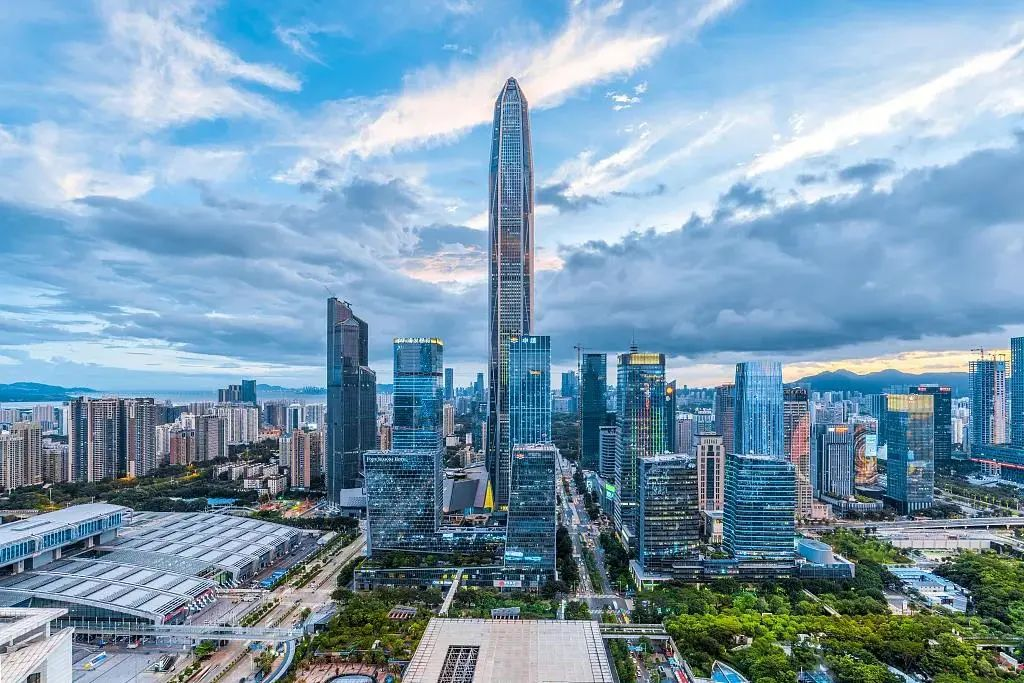Prof. Tao Yitao
Director of CCSEZR, SZU
Abstract: The establishment of a unified national market will help further improve China’s market economy system and promote the coordination of economic development in all regions and the nationwide enhancement of the market economy level. With an improved market economy system, China will achieve a higher level of opening-up and truly integrate into economic globalization. Therefore, a higher level of opening-up and the establishment of a unified national market are mutually reinforcing. More than 40 years of reform and opening-up have underpinned the establishment of a unified national market, and a higher level of opening-up will further fuel its growth.
The “Opinions of the CPC Central Committee and the State Council on Accelerating the Establishment of a Unified National Market” (the “Opinions”) were promulgated on April 10. What institutional barriers need to be lifted to build a unified national market? What role does it play in accelerating the formation of a new development pattern in which the domestic and international dual circulation stimulates each other? What is the relationship between the implementation of a higher level of opening-up and the establishment of a unified national market? As the core engine city of the Guangdong-Hong Kong-Macao Greater Bay Area (GBA), how can Shenzhen play a pilot demonstration role in building a unified national market? Regarding these social concerns, a reporter from Shenzhen Special Zone Daily (SSZD) recently interviewed Prof. Tao Yitao, Director of China Center for Special Economic Zone Research (CCSEZR), Shenzhen University (SZU).

I
The establishment of a unified national market has far-reaching significance for sustainable and high-quality development of China’s economy.
SSZD: The “Opinions” proposed to accelerate the establishment of unified national market system rules, eliminate local protectionism and market segmentation, remove the key blockages that restrict the economic circulation, and promote the smooth flow of commodity factor resources in a wider scope. How to interpret the unified national market? Why did the CPC Central Committee specifically propose to accelerate the establishment of a unified one?
Tao Yitao: First of all, on the whole, a unified national market is an important and indispensable institutional environment to support the construction and realization of a new development paradigm of dual circulation. It will further improve the market mechanism, eliminate institutional barriers and reduce transaction costs, to achieve the market economy-oriented deepening reform in a more systematic and institutionalized way, which has far-reaching significance for China’s economy to achieve sustainable and high-quality development.
Why did the CPC Central Committee specifically propose to accelerate the establishment of a unified national market? The key lies in the fact that the current market still has certain institutional flaws, which to varying degrees cripple the decisive role of the market mechanism in resource allocation. We know that the market is both an institutional environment and a resource, and this is even more true for a well-developed and sound market mechanism. Building a unified, open, and orderly competitive market system is the basis for the market to play a decisive role in resource allocation.
The main drags on the unified market are as follows: 1. Segmentation of certain factor markets brought about by local protectionism. 2. Incomplete construction of the factor and resource market system. 3. Diseased and non-standard quality system of goods and services market. 4. Lack of unified market supervision rules, standard system and operation procedures. 5. Undeveloped innovation market, resulting in an insufficient role that the super-large-scale market plays in technological innovation and industrial upgrade.
Therefore, accelerating the establishment of a unified national market for smooth circulation is necessary to build the new development pattern of dual circulation and for the market to play a decisive role in resource allocation.

II
Without a healthy market-oriented unified national market, there is no institutional environment and mechanism required to guarantee dual circulation.
SSZD: Accelerating the formation of a new development pattern in which domestic and international circulations promote each other is a systemic and profound reform that concerns the national strategy. What is the relationship between the building of the dual-circulation development pattern and the establishment of a unified national market?
Tao Yitao: Without a healthy market-oriented unified national market, there is no institutional environment and mechanism required to guarantee dual circulation. Building the dual-circulation development pattern is an urgent need for China’s sustainable and coordinated economic development. At the same time, the dual circulation necessitates the support of the institutional environment, and the market is its fundamental environment. First, a unified national market is conducive to the transmission of price signals without intermediate links to a certain extent, thus facilitating the flow of production factors according to the law of value. Secondly, the formation of a unified national market, with more symmetrical information, can adjust supply and demand with the power of the market and promote the proper flow of all factors among regions. Thirdly, the establishment of a unified national market will promote the coordinated development of all regions.
SSZD: Since the reform and opening-up, China has continuously integrated into the world market and made great achievements that have attracted worldwide attention. Then, what is the relationship between the implementation of a higher level of opening-up and the establishment of a unified national market?
Tao Yitao: The establishment of a unified national market will help further improve China’s market economy system and promote the coordination of economic development in all regions and the nationwide enhancement of the market economy level. With an improved market economy system, China will achieve a higher level of opening-up and truly integrate into economic globalization. Therefore, a higher level of opening-up and the establishment of a unified national market are mutually reinforcing. More than 40 years of reform and opening-up have underpinned the establishment of a unified national market, and a higher level of opening-up will further fuel its growth.
Promoting reform through opening-up is the basic logical path of institutional change in Chinese society. Along this path, since the reform and opening-up, China has implemented the development strategy of “international circulation”, that is, to fully utilize its comparative advantages to develop an export-oriented economy and actively integrate into the international division of labor chain and economic globalization by “export substitution”.
Fundamentally, since the reform and opening-up of China, the internal circulation (domestic demand) and external circulation (exports) are closely related and codependent. Therefore, the tilt toward the domestic circulation is neither a negation of the international circulation nor a negation of the externally-oriented economy, but the overall strategic layout for economic structure optimization, modern industrial system building and a higher level of opening-up. It is a continuation of the reform and opening-up policy, and a more profound and challenging expansion and deepening of this policy in the new era.
The building of a new development pattern of dual circulation and the implementation of high-level opening-up together constitute an important part of China’s social development strategy in the new era, which is to improve the socialist market economy system and to participate in international competition effectively and with a higher level, thus forming an economic structure and a healthy circular economy with institutional competitiveness and sustainable development potential. The optimization of the economic structure and the formation of a healthy circular economy are the basis for implementing high-level opening-up.

III
Shenzhen has the potential to become a high-quality source to release factors in the establishment of a unified national market.
SSZD: How to carry out the regional market integration in the GBA under the premise of maintaining a unified national market?
Tao Yitao: For the regional market integration in the GBA, a major national strategic region, under the premise of maintaining a unified national market, we should: 1. solve the contradiction between administrative division and regional integration, and eliminate the administrative cost of free flow of all factors in the region. 2. overcome the challenge of human capital flowing without institutional obstacles under the principle of “One Country, Two Systems”, and make full use of the inherent advantages of internationalization. 3. promote the coordinated development of regions with policies and market forces, and gradually reduce the “polarization effect” of uneven regional development due to the fact that the “backwash effect” is greater than the “diffusion effect”, so as to support and integrate into the unified national market with a higher level of a regional one.
SSZD: As the core engine city of the GBA, how can Shenzhen play a pilot demonstration role in building a unified national market?
Tao Yitao: Building a unified national market is a major institutional arrangement and measure to realize the dual-circulation development pattern under the new situation. Shenzhen, as the core engine city of GBA, not only enjoys the policy advantages and institutional capital of its dual identities, but also shoulders the trailblazing mission. Therefore, in the process of building a unified national market, Shenzhen can rely on the accumulated advantages of taking the lead in reform and development for more than 40 years to strengthen itself, thereby leading the way in deepening reform as a model.
Shenzhen not only boasts the material wealth and institutional capital accumulated over the past 40 years of reform and opening-up, but also enjoys a unique position in China’s overall economic structure. When realizing the dual-circulation development pattern and building a unified national market, Shenzhen, an export-oriented city, has unique advantages and functions derived from its development and accumulation. On the one hand, as the pilot demonstration area strides forward into a high level of opening-up, its position in realizing the dual-circulation development pattern is irreplaceable. On the other hand, as a city with a relatively complete market economic system and active mobility of factors, it plays a pivotal role in building a unified national market. Therefore, Shenzhen should continue to lead the charge in China’s reform and opening-up, further improve the market economic system, build a large and smooth market first with low transaction costs and free flow of factors in a wider area with institutional innovation, insist on promoting reform through opening-up, and expand institutional channels and practice approach for high-level opening-up. This not only is entailed by the realization of the dual-circulation development pattern, but also underlays the effective establishment of a unified national market.
An excellent economic structure and a modern industrial system are the foundation of dual circulation and the establishment of a high-quality unified national market. Because behind the flow of factors is the demand of the industry, and the level of the industrial structure determines the characteristics of the demand for factors. Shenzhen has not only a sustainable development potential and an excellent industrial structure full of sustainable competitiveness, but also a fairly active and abundant factor market. This hopefully makes Shenzhen a source of high-quality factors, to promote the formation of a high-quality unified national market with the first-mover advantage of its market economy system.
The institutional transformation from policy opening-up to institutional opening-up and from an export-oriented economy to an open economy guarantees the true realization of dual circulation and then the establishment of a healthy unified national market. As a pioneer of reform and opening-up, Shenzhen should leverage its unique factor endowments, including its location advantages, and the competitiveness of its optimized industrial model, to provide lessons and replicable practices for building a high-level unified national market through institutional achievements. This is both a responsibility and mission and a function of the Shenzhen SEZ in the new era.
Shenzhen could: 1. leverage its technology innovation engine, improve the market mechanism of emerging factors (e.g., digital economy), and explore the establishment of an innovation market; 2. give full play to the advantages of its mature market economy, and establish systems first in terms of improving and standardizing the market quality system of goods and services; 3. fully demonstrate its first-mover advantages in establishing unified market supervision rules, standard systems and operating procedures, and become the most dynamic and innovative system provider indispensable in the process of building a high-quality unified national market.

IV
The continuous optimization of the business environment will further unleash the vitality of development and make Shenzhen’s due contributions to the establishment of a unified national market.
SSZD: To build a unified national market, it is necessary to reduce market transaction costs and enterprise costs, which is impossible with a good business environment. How can Shenzhen build a more transparent and friendly business environment?
Tao Yitao: The “Opinions” clearly pointed out that to build a unified national market, efforts should be made in two aspects and the institution should be improved. On the one hand, attention should be paid to institution building and the milestone requirements should be clearly defined. On the other hand, problem-solving thinking should be adopted, and efforts should be made to resolve prominent contradictions and problems, accelerate the elimination and abolition of various regulations and practices that impede a unified market and fair competition, and break up various closed small markets and cycles.
The business environment is undoubtedly a crucial factor in attracting and retaining factors of production. For more than 40 years, it is a competitive business environment that has empowered Shenzhen to win quality resources and a wide space for its development. In the process of building a unified national market, Shenzhen can not only provide institutional space for the free flow of factors under the premise of following the laws of the market, but also promote the improvement of market economy culture, concepts and perception while the free flow of factors is not limited.
On May 8, Shenzhen formulated and released the “Shenzhen’s Implementation Plan for Building a Pilot City of Business Environment Innovation” to accelerate the creation of a market-oriented, legalized, and internationalized first-class business environment, and strive to become the best choice in the world for innovation, entrepreneurship and investment development.
The process of building a unified national market is by no means a simple flow of economic factors, but fundamentally a process of institution building and concept renewal. And the continuous optimization of the business environment will further unleash the vitality of development and make Shenzhen’s due contributions to the establishment of a unified national market.
(This article is reproduced from the B1 page of Shenzhen Special Zone Daily on June 21, 2022.)




